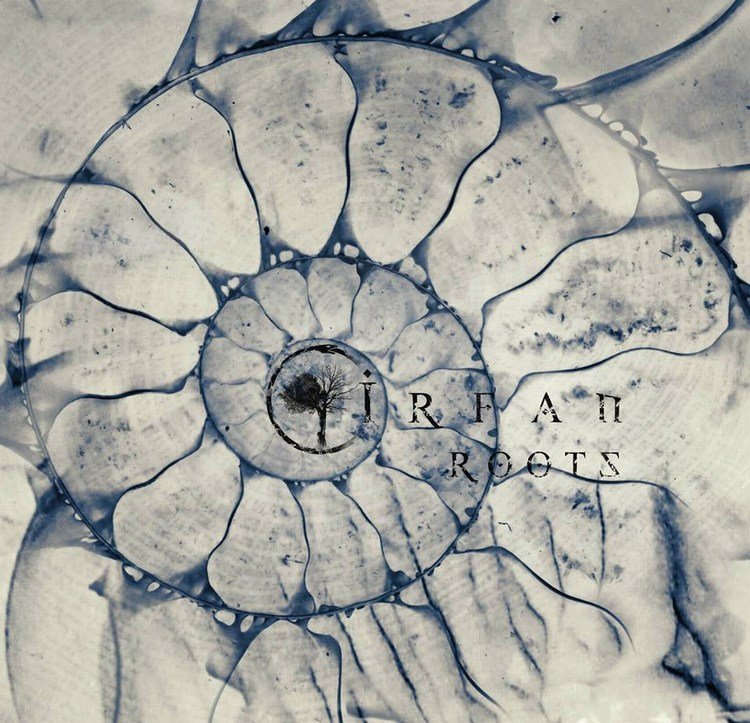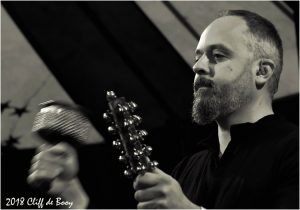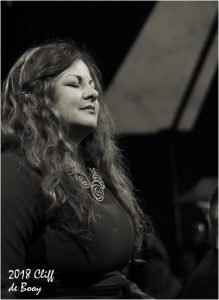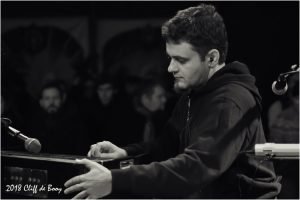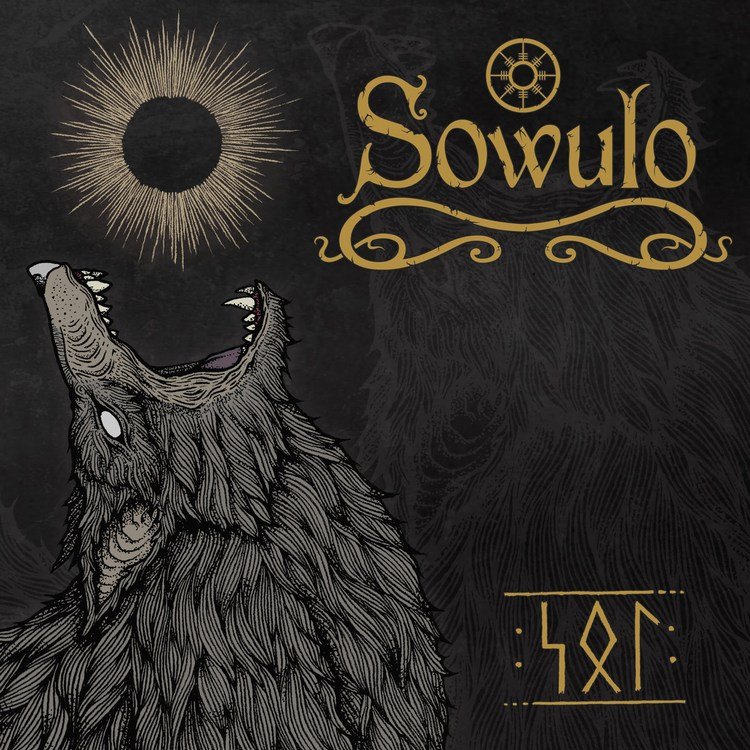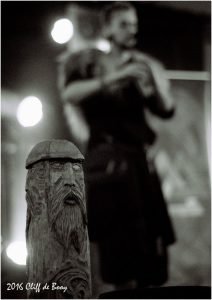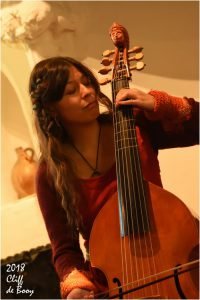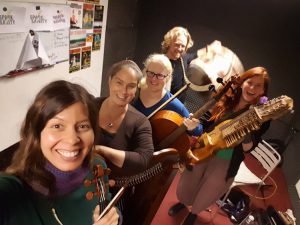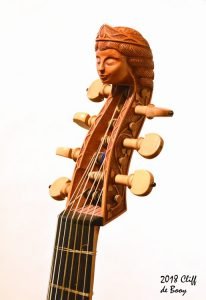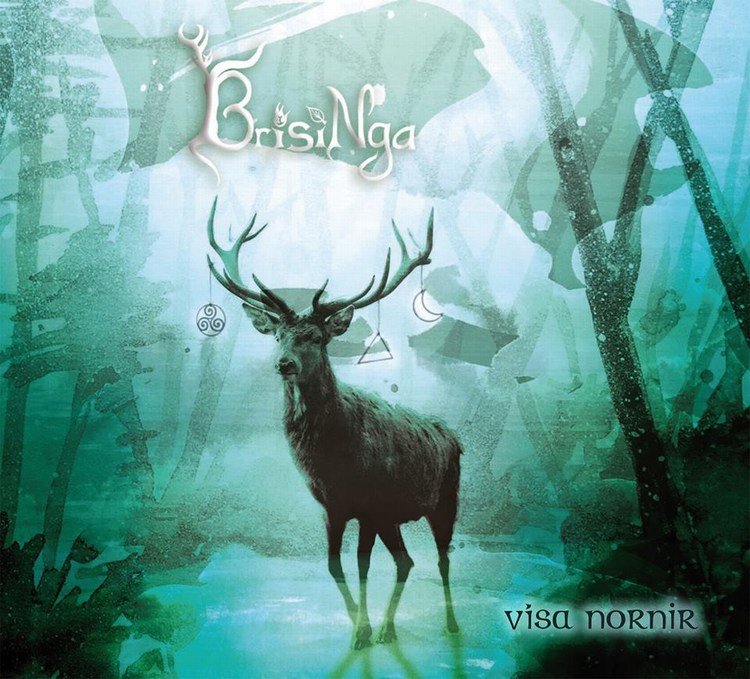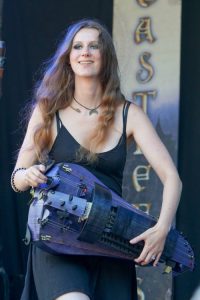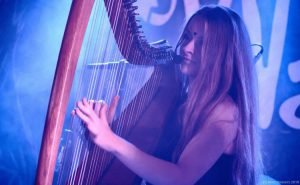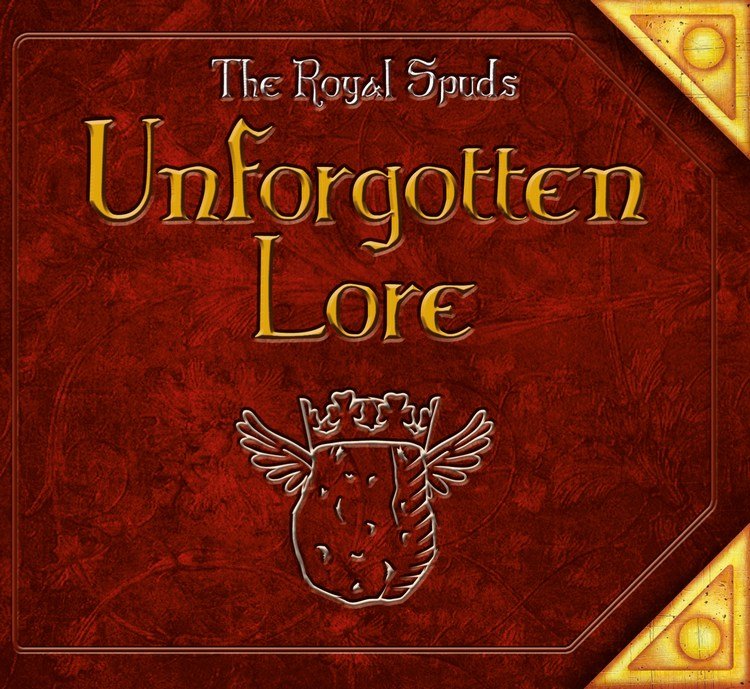
From the moist dirt of South Holland a new kind of tuber emerged. The kind that walks on two legs and is fused with an instrument of choice. Some might say it is a spud, but it is not just any spud, no it is a Royal Spud! Perfect for a half-baked punk mash with chunks, suffused with a traditional Irish shamerock ‘n’ roll sauce. As befits a ‘real’ spud the possibilities with it are endless! And remember, just as with any salty fried spud, once you have had a taste of it, you will be left craving for more.
 With this free interpretation of their band bio we can proudly present Unforgotten Lore, the new EP of the
Royal Spuds!
What? A punk folk band on CeltCast? Yes, because with A Man they have written a semi-acoustic punk folk ballad that fulfills all the criteria that a song needs to be played on our livestream. And I for one am thrilled about that. The Spuds’ music takes me right back to the early 2000’s, when I was still volunteering in an alternative youth centre, and I regularly crashed the dancefloor on tunes from
The Killers,
Reel Big Fish,
Rancid‘s Time bomb,
Dropkick Murphys,
Chumbawamba
and the Royal Spu…… Wait a minute, not so fast. Not the Spuds. Although their music would have fitted perfectly in this list, their story starts a wee bit later. Around ten years later actually. To be precise it starts in 2012 with their debut album Wanted, Drunk ‘N’ Alive!
With this free interpretation of their band bio we can proudly present Unforgotten Lore, the new EP of the
Royal Spuds!
What? A punk folk band on CeltCast? Yes, because with A Man they have written a semi-acoustic punk folk ballad that fulfills all the criteria that a song needs to be played on our livestream. And I for one am thrilled about that. The Spuds’ music takes me right back to the early 2000’s, when I was still volunteering in an alternative youth centre, and I regularly crashed the dancefloor on tunes from
The Killers,
Reel Big Fish,
Rancid‘s Time bomb,
Dropkick Murphys,
Chumbawamba
and the Royal Spu…… Wait a minute, not so fast. Not the Spuds. Although their music would have fitted perfectly in this list, their story starts a wee bit later. Around ten years later actually. To be precise it starts in 2012 with their debut album Wanted, Drunk ‘N’ Alive!
At the time they sounded just the way a young punk folk band should sound: rough, tough and pure. Sound wise you could compare them with the rough punk folk of the Dropkick Murphys enriched with some metal influences, especially in the guitar sound and solos. A cool debut album, even after all those years.
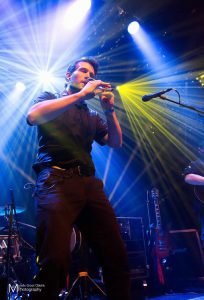 The next Spuds album, It’s A Feckin’ Freakshow, came out in 2015. The sound was getting more melodic, with a big role for Micky’s tin whistle and accordion, but still with a sharp, aggressive metal feel, especially in the guitar sound of Milan and Robin. Songs like Tonight I’m Staying In would not look out of place on a Dropkick Murphys,
Toy Dolls
or
The Real McKenzies
CD. Pure upbeat punk folk. But songs like Mary Goes Round or the beautiful ballad The Dying Rebel already showed that The Royal Spuds were becoming more then just a straight forward Punk band. And now we have Unforgotten Lore. It came out just before before the end of last year, and the big question is, did they ramp up the quality even more on their newest mini album?
The next Spuds album, It’s A Feckin’ Freakshow, came out in 2015. The sound was getting more melodic, with a big role for Micky’s tin whistle and accordion, but still with a sharp, aggressive metal feel, especially in the guitar sound of Milan and Robin. Songs like Tonight I’m Staying In would not look out of place on a Dropkick Murphys,
Toy Dolls
or
The Real McKenzies
CD. Pure upbeat punk folk. But songs like Mary Goes Round or the beautiful ballad The Dying Rebel already showed that The Royal Spuds were becoming more then just a straight forward Punk band. And now we have Unforgotten Lore. It came out just before before the end of last year, and the big question is, did they ramp up the quality even more on their newest mini album?Listening to the first two songs, Too Old For This and Johnny Jump Up it’s clear not much has changed in the Spuds world. It is party time right from the start. Good quality punk folk, a Bro Hymn kinda sing-along chorus and a stunner of a guitar solo by Milan are more then enough to get things going. The band sounds tighter than ever before and the flute that already had a big role on Feckin’ Freakshow is even more prominent now.
Johnny Jump Up, the second drinking song – nothing changed there too- is an earworm that I can’t seem to get out of my head for days now. Micky’s accordion together with the chorus is so addictive. Another thing you will notice is how much Maarten has grown as a singer. His voice has become warm and powerful with the right amount of sandpaper when he needs it. In early Spud days, he shouted his lyrics out, but nowadays all the power comes out of a big set of lungs and good singing technique. With those two tools he easily matches the energy of the band.
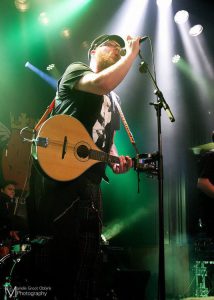 As I said, Johnny Jump Up is a genuine earworm, cool melody, catchy chorus, and a cheerful ska riff make this an instant party song. You also hear the biggest change between the earlier two albums and Unforgotten Lore, the guitar sound. I already mentioned that the guitars on Feckin’ Freakshow still had a metal sound. Sharp heavy distorted riffs filled up the space in between the other instruments. This time Milan and Robin have a much cleaner rock sound. Which gives the other instruments much more room to shine. You can, as an example, now clearly hear the lovely grooving basslines that Dave is playing. A good thing ’cause he is running all over the neck of his bass guitar on Unforgotten Lore. Never knew he was such a funky bass player.
As I said, Johnny Jump Up is a genuine earworm, cool melody, catchy chorus, and a cheerful ska riff make this an instant party song. You also hear the biggest change between the earlier two albums and Unforgotten Lore, the guitar sound. I already mentioned that the guitars on Feckin’ Freakshow still had a metal sound. Sharp heavy distorted riffs filled up the space in between the other instruments. This time Milan and Robin have a much cleaner rock sound. Which gives the other instruments much more room to shine. You can, as an example, now clearly hear the lovely grooving basslines that Dave is playing. A good thing ’cause he is running all over the neck of his bass guitar on Unforgotten Lore. Never knew he was such a funky bass player. Ok I have to admit, The Spuds did lose a bit of pure aggression in their sound with this change, but gained so much melody and variation in exchange for it that I can wholeheartedly support their decision. Guitarist Milan told me that the band developed the new sound together with their sound technician and Kayāmata singer Loek Stevens, who also is responsible for recording Unforgotten Lore.
The variation the Spuds gained becomes really clear on the album’s sixth song, Tri Martolod. A cover of this traditional from Bretagne made famous by Alain Stivell. The Spuds version starts with a gentle acoustic intro on guitar and flute, but soon it turns into a surprising flute solo break that wouldn’t sound out of place on a old Jethro Tull or Focus album. What a cool solo this is. Micky is really rocking his flute here. The Spuds have some more surprises up their sleeve in Tri Martolod. Breaks, sing-alongs, pace acceleration, they throw everything at you, but the biggest treat is hidden in the end. The reggae acceleration with yet another flute solo finishing the song, is the icing on the cake. What’s happening here???? After hearing this the first time I was convinced by the refreshed Spuds sound. This is brilliant stuff! Rancid, Reel Big Fish, eat your heart out!
Another surprise is A Man. You could call it an acoustic Irish folk meets Western folk rock ballad. Good catchy song. People who like Sunfire will probably like this song too. It has it all, banjo, strong vocals, grooving bass and again that enchanting flute solo from Micky. Next up is Ally In Killarney, a cool straightforward punk song. But, I can’t give any more in depth (pun intended) comments about it or its lyrics to avoid a parental advisory sticker on this review.
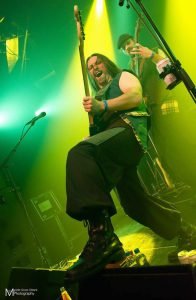 The last surprise is also the last song on Unforgotten Lore. A heroic saga like the Swedish metal band
Dream Evil
would play. The Last Wild Haggis is a pure punk metal powerballad, including another cool guitar solo by Milan. It also has – just as Dream Evil- over the top, totally odd lyrics. Who ever would come up with the idea of Scotsmen hunting wild HAGGIS!!! Well the Royal Spuds would!
The last surprise is also the last song on Unforgotten Lore. A heroic saga like the Swedish metal band
Dream Evil
would play. The Last Wild Haggis is a pure punk metal powerballad, including another cool guitar solo by Milan. It also has – just as Dream Evil- over the top, totally odd lyrics. Who ever would come up with the idea of Scotsmen hunting wild HAGGIS!!! Well the Royal Spuds would!Up till now I’ve always seen the Royal Spuds as the angry young brother of Dutch melodic folk punk band Scrum. But young brothers grow up, as did the Royal Spuds. And with Unforgotten Lore they settle themselves right next to Scrum as one of the top bands in the Dutch melodic punk folk scene. Well done.
-Cliff
Editor: Diane
Pictures: Marielle Groot Obbink
